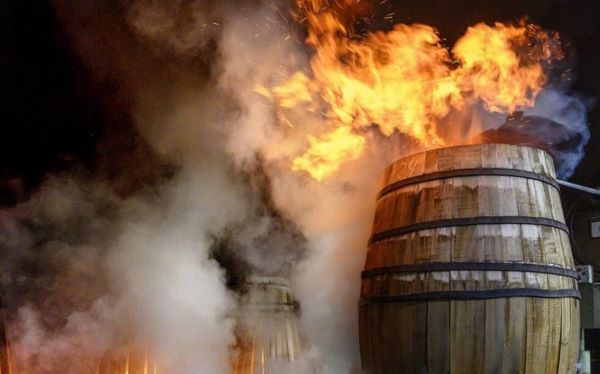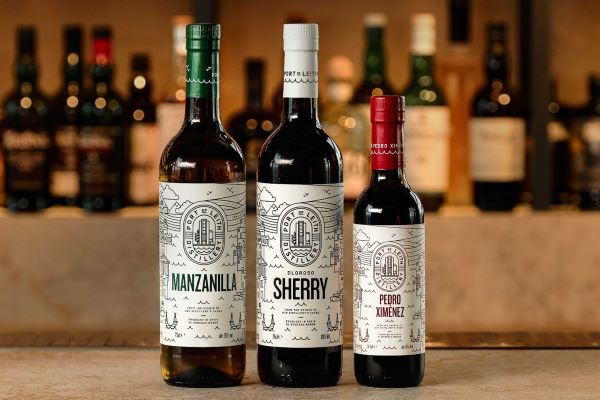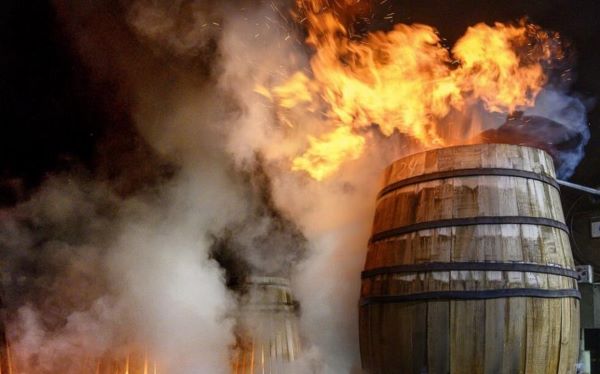Sherry-Cask Whisky
Forget those bottles of Bristol Cream for gluing granny's lips together at Christmas, sherry is a wonderfully diverse drink whose casks are seized upon by the Scotch whisky industry. But the story is really about wood not wine discovers Tom Bruce-Gardyne …
'Tied between two coconut palm trees, the hammock gently swayed in a breeze that mixed wafts of fragrant tobacco and polished tropical wood with soft leather…' It could be Mills & Boon – the start of a steamy romance where a bored Army wife finds passion in the Tropics. Instead, it's the opening lines of the Scotch Malt Whisky Society (SMWS)'s tasting notes on one of its current crop of sherried whiskies.
This month, the Society has gone big on sherry, releasing a fascinating documentary on sherry casks directed by Richard Goslan and starring Euan Campbell, its head of whisky creation. It spans the journey from the sustainable oak forests of Galicia to the air-drying of the staves, the toasting of the barrels, and the long months of holding Oloroso in a bodega near Jerez in the southern tip of Spain.

From tree to Scottish warehouse is a journey of five to six years, where each cask – be it a 500-litre butt, or a 250l hogshead, begins its long, second life maturing whisky. The attention to detail by the SMWS and others who take sherry maturation seriously, is extraordinary with every step of the process carefully adjusted for its likely influence on the whisky.
You could easily imagine the wine itself has the greatest impact with around a dozen litres of it absorbed into the pores of each cask, and sherry types like 'Oloroso' and 'Pedro Ximénez' or 'PX' proudly stamped on the label as though you could taste them in the whisky. In truth, it plays a minor role, and that role is really about tempering the raw, tannic taste of fresh oak.
Before American bourbon barrels became the go-to cask for Scotch, Spain was the main supplier. In the early 20th century, an estimated 40% of the UK wine trade was in sherry which was shipped in butts to be bottled in London, Bristol and Leith, leaving the empties for the whisky trade. These butts were not for maturing the wine, they were purely for transport – a practice that declined until it ceased altogether in 1968 with a law decreeing that all sherry should be bottled in Spain.
As early as 1864, Charles Tovey wrote: 'It is well known that Whisky stored in Sherry casks soon acquires a mellow softness,' in his book 'British and Foreign Spirits' The modern trade from Spain, documented in the film, is "all about recreating those old transit casks," Euan explains.

As well as the type of oak, he believes the way the casks are toasted over a fire is particularly crucial. "The temperature and time are arguably the most important things," he says. "The toasting unlocks a lot of flavour. It helps with the breakdown of constituents in the wood and softens the tannins."
Having once been the lucky recipient of cheap, hand-me-down butts in the UK, distillers like Edrington, owners of The Macallan, piled into Spain to take control of the whole process. For the Spanish, "I think it's a hugely significant revenue stream, which they place separately to sales of bottled sherry," says Euan. "When you look at the number of casks and the investment by the Scotch industry, it's massive."
The biggest change since the days of transit casks is the price. A butt now costs "about £1,200," claims Gordon Dundas, of Ian Macleod Distillers (IMD). "And blenders love sherry hogsheads which are probably around £850-900. So, half the size and definitely not half the price." He reckons for Tamdhu, which IMD bought from Edrington in 2011 and which is fully-matured in sherry casks, "you'd get two decent fills."
He puts the popularity of sherried whiskies down to many things, and says: "If you look at markets in Asia, people love the colour you get from Oloroso or PX sherry casks. That colour feeds the narrative of dark whiskies being old." It's a narrative that many distillers play on, somewhat shamelessly, in their use of spirit caramel, or 'fake tan'.
The likes of Tamdhu, the SMWS and The Macallan are a bit more honest in their insistence on natural colour. The vast majority of malts that trumpet their sherry credentials only spend their final months in such a cask. Some like the SMWS insist on a decent 18-24 months, others probably pump it out rather quicker.
Being fully sherry-matured, Tamdhu can't compete on price with all the sherry-finished malts, but Gordon Dundas likes the fact "it's an easy story to tell" – and one that's free of spirit caramel. "If you colour your whisky, that story is nowhere near as strong," he says.
"The challenge for us," he continues, "is access to oak – that is the main reason sherry casks are so expensive. The supply of the casks is not expanding, but it's not contracting." Demand has grown on the back of The Macallan which commands such a premium for its sherried whiskies, and the Spanish have realised the value of their asset.

For the newly-built Port of Leith distillery in Edinburgh, getting in on the sherry act would seem impossible. But its owners decided to import bottled sherry and release it as their first ever product in 2018. The distillery fired up its stills in February, and visitors get to taste the newmake spirit along with some sherry and a tawny port. "Our customers can understand the impact those wines might have, and in future we'll be able to get our casks direct from the source," says co-founder, Ian Stirling. "And, it's about telling the story of Leith where, by some reckoning, people first got a taste for whisky matured in sherry casks."
It is a brilliantly simple idea, that neatly joins the dots between sherry and whisky. Those marketing single malts appear to assume that everyone knows their Oloroso from their PX and their Fino from their Palo Cortado. The truth is they don't.

Award-winning drinks columnist and author Tom Bruce-Gardyne began his career in the wine trade, managing exports for a major Sicilian producer. Now freelance for 20 years, Tom has been a weekly columnist for The Herald and his books include The Scotch Whisky Book and most recently Scotch Whisky Treasures.
You can read more comment and analysis on the Scotch whisky industry by clicking on Whisky News.
